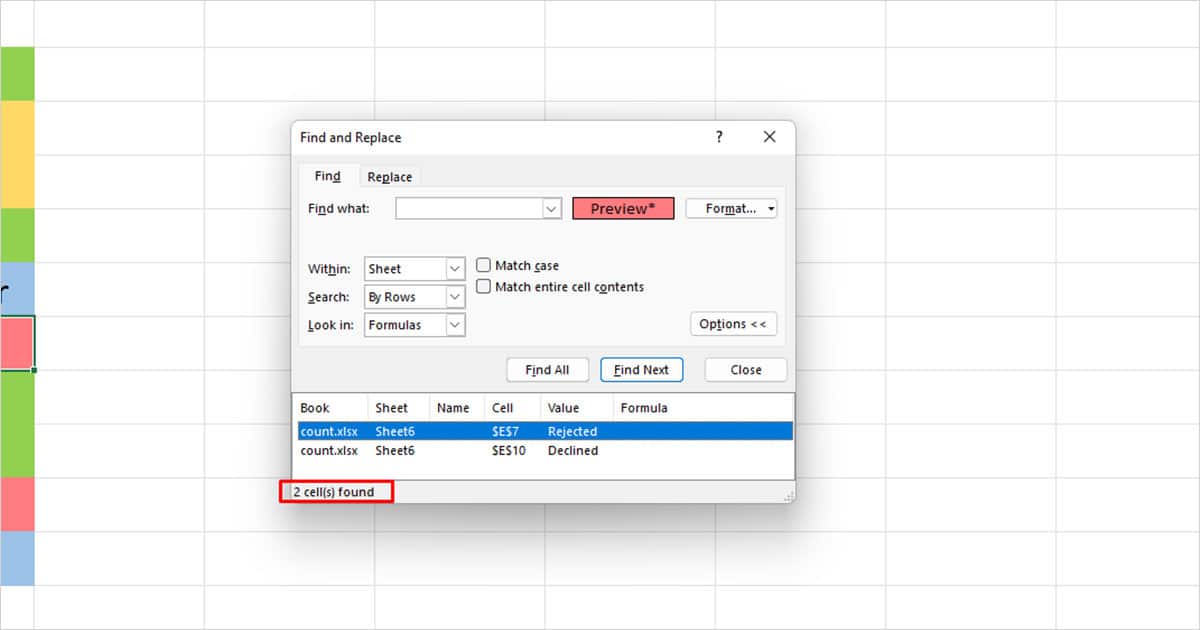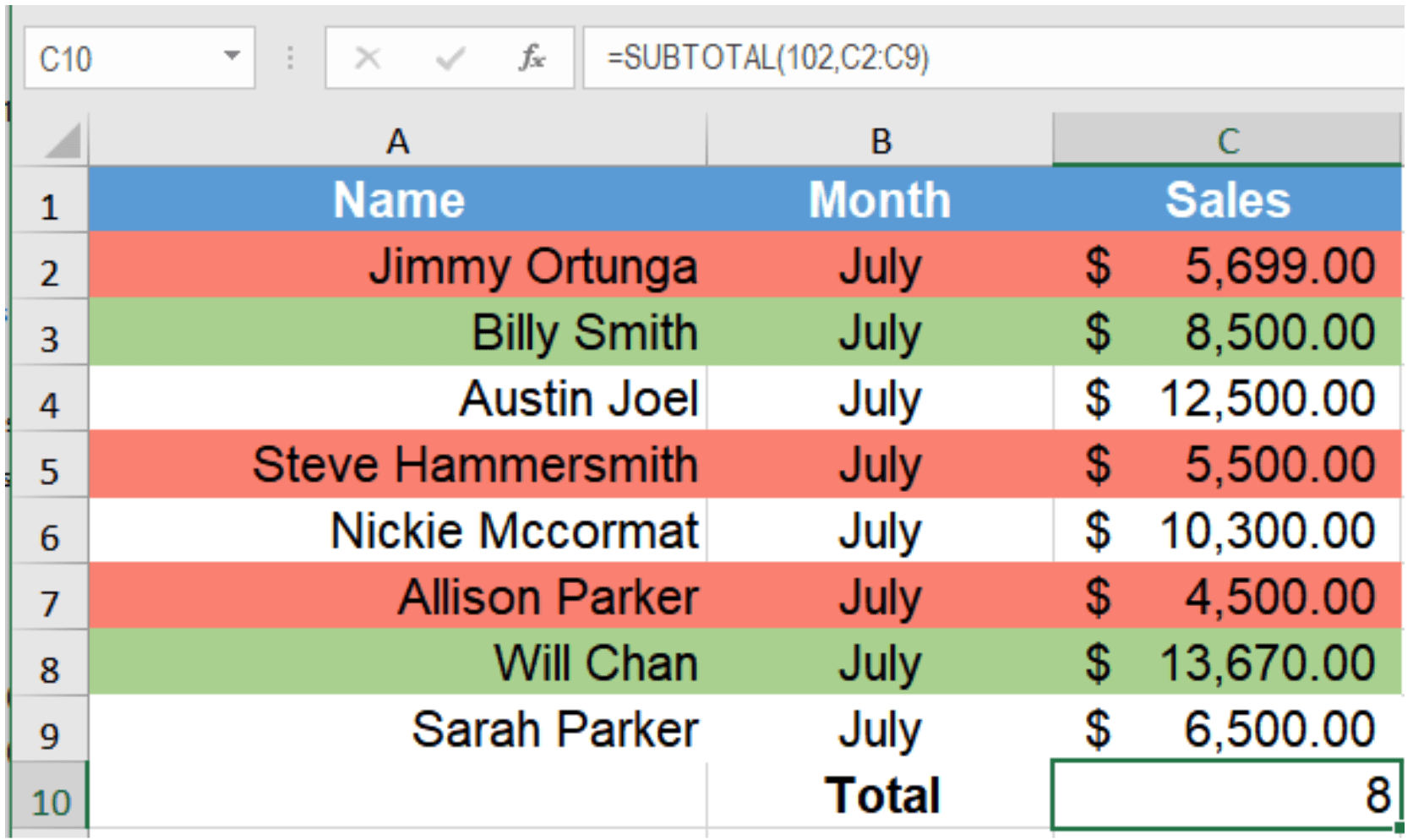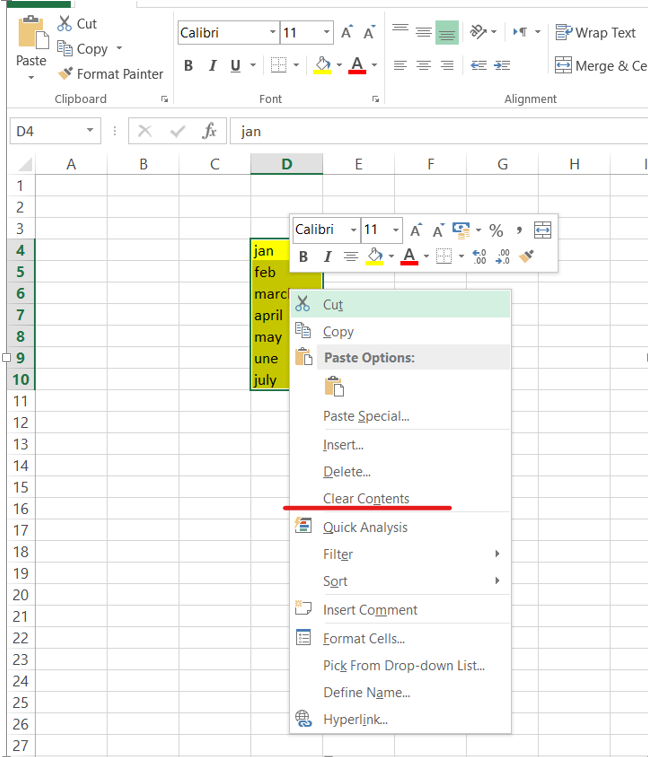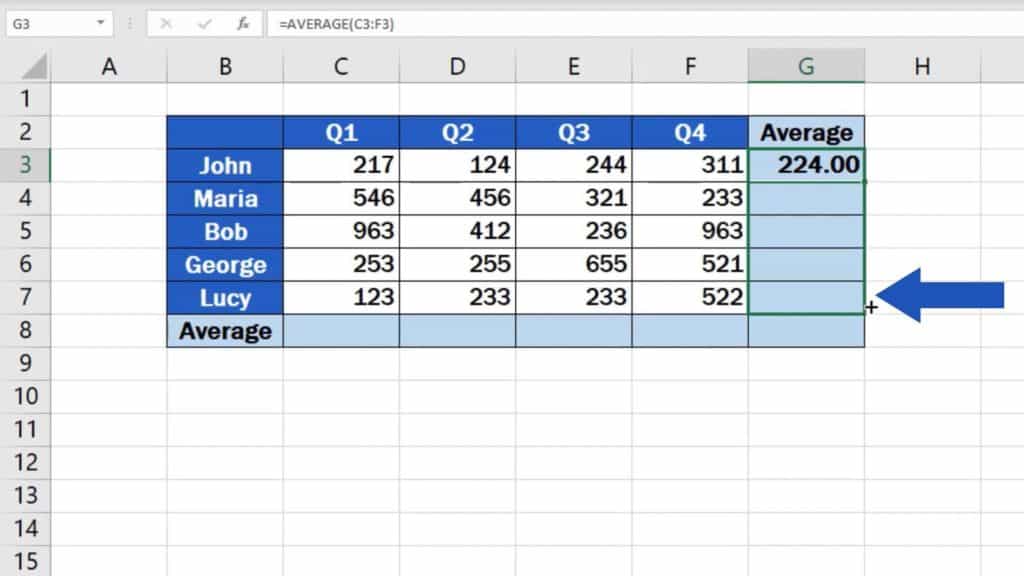Introduction

Excel is a powerful tool for data analysis and management, and one of its most useful features is the ability to highlight cells. Whether you’re working with a large dataset or simply want to draw attention to specific cells, knowing how to count highlighted cells can be extremely beneficial. In this ultimate guide, we will explore 17 tips to help you master this skill and take your Excel skills to the next level.
Understanding Highlighted Cells

Before we dive into the tips, let’s clarify what we mean by highlighted cells in Excel. Highlighting cells is a way to visually emphasize specific data points or ranges within a worksheet. It can be done by selecting the cells and applying a fill color or by using conditional formatting to highlight cells based on certain criteria.
Tip 1: Visual Inspection

The simplest method to count highlighted cells is through visual inspection. Open your Excel worksheet and carefully examine the cells. Count the number of cells that have a fill color or any other visual indication of being highlighted.
Tip 2: Select All Highlighted Cells

To make the counting process easier, you can select all the highlighted cells at once. Simply click on one of the highlighted cells and press Ctrl + A to select all adjacent highlighted cells. The number of selected cells will be displayed in the status bar at the bottom of the Excel window.
Tip 3: Use the Go To Special Feature

Excel’s Go To Special feature is a powerful tool for selecting specific types of cells. To count highlighted cells using this feature, follow these steps:
- Select a cell or range of cells within your worksheet.
- Go to the Home tab and click on the Find & Select dropdown.
- Choose Go To Special from the dropdown menu.
- In the Go To Special dialog box, select Current selection only and check the Blanks option.
- Click OK to select all blank cells within your selection.
- Count the number of selected cells to determine the count of highlighted cells.
Tip 4: Utilize Conditional Formatting

Conditional formatting is a great way to highlight cells based on specific criteria. You can use this feature to identify and count highlighted cells by following these steps:
- Select the range of cells you want to apply conditional formatting to.
- Go to the Home tab and click on the Conditional Formatting dropdown.
- Choose an appropriate rule, such as Highlight Cells Rules or Top/Bottom Rules, based on your criteria.
- Adjust the rule settings to define the criteria for highlighting cells.
- Click OK to apply the conditional formatting.
- Count the number of highlighted cells to determine the total count.
Tip 5: Create a Custom Function

If you frequently need to count highlighted cells, you can create a custom function in Excel to automate the process. Here’s how you can create a simple function to count highlighted cells:
- Open the Visual Basic Editor by pressing Alt + F11.
- In the Visual Basic Editor, go to the Insert tab and click on Module.
- In the new module, paste the following code:
Function CountHighlightedCells(rng As Range) As Long
Dim cell As Range
CountHighlightedCells = 0
For Each cell In rng.Cells
If cell.Interior.Color = RGB(255, 0, 0) Then ' Adjust the RGB values as needed
CountHighlightedCells = CountHighlightedCells + 1
End If
Next cell
End Function
- Close the Visual Basic Editor and return to your Excel worksheet.
- Enter the following formula in a cell to count highlighted cells:
=CountHighlightedCells(A1:C10)
Replace A1:C10 with the range of cells you want to count.
Tip 6: Use the COUNTIF Function

Excel’s COUNTIF function can be used to count cells that meet a certain condition. You can leverage this function to count highlighted cells by specifying the fill color as the condition. Here’s an example formula:
=COUNTIF(A1:C10, ">=255") + COUNTIF(A1:C10, "<=0") + COUNTIF(A1:C10, "<>0") + COUNTIF(A1:C10, "<>255")
This formula counts cells with fill colors that have RGB values between 0 and 255.
Tip 7: Combine COUNTIF with Conditional Formatting

You can combine the COUNTIF function with conditional formatting to count highlighted cells based on specific criteria. Here’s an example formula:
=COUNTIF(A1:C10, ">0") + COUNTIF(A1:C10, "<=0") + COUNTIF(A1:C10, "<>0") + COUNTIF(A1:C10, "<>255")
This formula counts cells that meet the criteria defined by your conditional formatting rules.
Tip 8: Utilize the SUBTOTAL Function

Excel’s SUBTOTAL function can be used to count cells within a range, excluding cells that are hidden or filtered. You can use this function to count highlighted cells by applying a custom filter to the range. Here’s an example formula:
=SUBTOTAL(102, A1:C10)
This formula counts the visible cells within the range A1:C10, excluding any hidden or filtered cells.
Tip 9: Combine SUBTOTAL with Conditional Formatting
Similar to the COUNTIF function, you can combine the SUBTOTAL function with conditional formatting to count highlighted cells based on specific criteria. Here’s an example formula:
=SUBTOTAL(102, A1:C10) + COUNTIF(A1:C10, ">0") + COUNTIF(A1:C10, "<=0") + COUNTIF(A1:C10, "<>0") + COUNTIF(A1:C10, "<>255")
This formula counts the visible cells within the range A1:C10 that meet the criteria defined by your conditional formatting rules.
Tip 10: Use the COUNTBLANK Function
The COUNTBLANK function in Excel counts the number of blank cells within a range. You can use this function to count highlighted cells by applying a custom filter to the range. Here’s an example formula:
=COUNTBLANK(A1:C10)
This formula counts the number of blank cells within the range A1:C10, which can be used as an indicator of highlighted cells.
Tip 11: Combine COUNTBLANK with Conditional Formatting
Similar to the previous tips, you can combine the COUNTBLANK function with conditional formatting to count highlighted cells based on specific criteria. Here’s an example formula:
=COUNTBLANK(A1:C10) + COUNTIF(A1:C10, ">0") + COUNTIF(A1:C10, "<=0") + COUNTIF(A1:C10, "<>0") + COUNTIF(A1:C10, "<>255")
This formula counts the number of blank cells within the range A1:C10 that meet the criteria defined by your conditional formatting rules.
Tip 12: Utilize the COUNT Function
Excel’s COUNT function counts the number of cells within a range that contain numbers. You can use this function to count highlighted cells by including the fill color as a criterion. Here’s an example formula:
=COUNT(A1:C10) + COUNTIF(A1:C10, ">=255") + COUNTIF(A1:C10, "<=0") + COUNTIF(A1:C10, "<>0") + COUNTIF(A1:C10, "<>255")
This formula counts the number of cells within the range A1:C10 that contain numbers and have fill colors within the RGB range of 0 to 255.
Tip 13: Combine COUNT with Conditional Formatting
You can combine the COUNT function with conditional formatting to count highlighted cells based on specific criteria. Here’s an example formula:
=COUNT(A1:C10) + COUNTIF(A1:C10, ">0") + COUNTIF(A1:C10, "<=0") + COUNTIF(A1:C10, "<>0") + COUNTIF(A1:C10, "<>255")
This formula counts the number of cells within the range A1:C10 that contain numbers and meet the criteria defined by your conditional formatting rules.
Tip 14: Use the SUM Function
The SUM function in Excel adds up the values in a range of cells. You can use this function to count highlighted cells by including the fill color as a criterion. Here’s an example formula:
=SUM(A1:C10) + COUNTIF(A1:C10, ">=255") + COUNTIF(A1:C10, "<=0") + COUNTIF(A1:C10, "<>0") + COUNTIF(A1:C10, "<>255")
This formula adds up the values in the range A1:C10 and includes the count of cells with fill colors within the RGB range of 0 to 255.
Tip 15: Combine SUM with Conditional Formatting
Similar to the previous tips, you can combine the SUM function with conditional formatting to count highlighted cells based on specific criteria. Here’s an example formula:
=SUM(A1:C10) + COUNTIF(A1:C10, ">0") + COUNTIF(A1:C10, "<=0") + COUNTIF(A1:C10, "<>0") + COUNTIF(A1:C10, "<>255")
This formula adds up the values in the range A1:C10 and includes the count of cells that meet the criteria defined by your conditional formatting rules.
Tip 16: Utilize the AVERAGE Function
The AVERAGE function in Excel calculates the average of the values in a range of cells. You can use this function to count highlighted cells by including the fill color as a criterion. Here’s an example formula:
=AVERAGE(A1:C10) + COUNTIF(A1:C10, ">=255") + COUNTIF(A1:C10, "<=0") + COUNTIF(A1:C10, "<>0") + COUNTIF(A1:C10, "<>255")
This formula calculates the average of the values in the range A1:C10 and includes the count of cells with fill colors within the RGB range of 0 to 255.
Tip 17: Combine AVERAGE with Conditional Formatting
You can combine the AVERAGE function with conditional formatting to count highlighted cells based on specific criteria. Here’s an example formula:
=AVERAGE(A1:C10) + COUNTIF(A1:C10, ">0") + COUNTIF(A1:C10, "<=0") + COUNTIF(A1:C10, "<>0") + COUNTIF(A1:C10, "<>255")
This formula calculates the average of the values in the range A1:C10 and includes the count of cells that meet the criteria defined by your conditional formatting rules.
Conclusion
Counting highlighted cells in Excel is a valuable skill that can enhance your data analysis and management capabilities. By following these 17 tips, you can efficiently count highlighted cells using various methods, including visual inspection, custom functions, and Excel’s built-in functions. Remember to adapt these tips to your specific needs and explore the possibilities offered by conditional formatting and custom filters. With practice, you’ll become an expert at counting highlighted cells and unlocking the full potential of Excel.
FAQ
Can I use a macro to count highlighted cells automatically?

+
Yes, you can create a macro in Excel to automate the process of counting highlighted cells. Macros can be recorded or written using Visual Basic for Applications (VBA) code. This allows you to customize the counting process and save time on repetitive tasks.
How can I apply conditional formatting to count highlighted cells based on a specific color?

+
To apply conditional formatting to count highlighted cells based on a specific color, you can use the “Format Cells” dialog box. Select the range of cells you want to format, go to the “Home” tab, and click on the “Conditional Formatting” dropdown. Choose “New Rule” and select “Format only cells that contain” as the rule type. Specify the cell value or formula that represents the color you want to count, and define the formatting style. Click “OK” to apply the conditional formatting.
Is it possible to count highlighted cells in multiple worksheets at once?

+
Yes, you can count highlighted cells in multiple worksheets simultaneously by using Excel’s Group feature. Select the worksheets you want to group by clicking on their tabs while holding the Ctrl key. Right-click on one of the selected tabs and choose “Group” from the context menu. Now, any changes or calculations you make will apply to all the grouped worksheets. You can count highlighted cells using the methods mentioned earlier, and the result will be the sum of the counts from each worksheet.
Can I use a pivot table to count highlighted cells?

+
Yes, you can use a pivot table to count highlighted cells. First, create a pivot table by selecting the data range and going to the “Insert” tab. Choose “PivotTable” and follow the prompts to create the pivot table. In the pivot table, add the column containing the highlighted cells to the “Rows” area and add a calculated field to the “Values” area. Use the COUNT function to count the